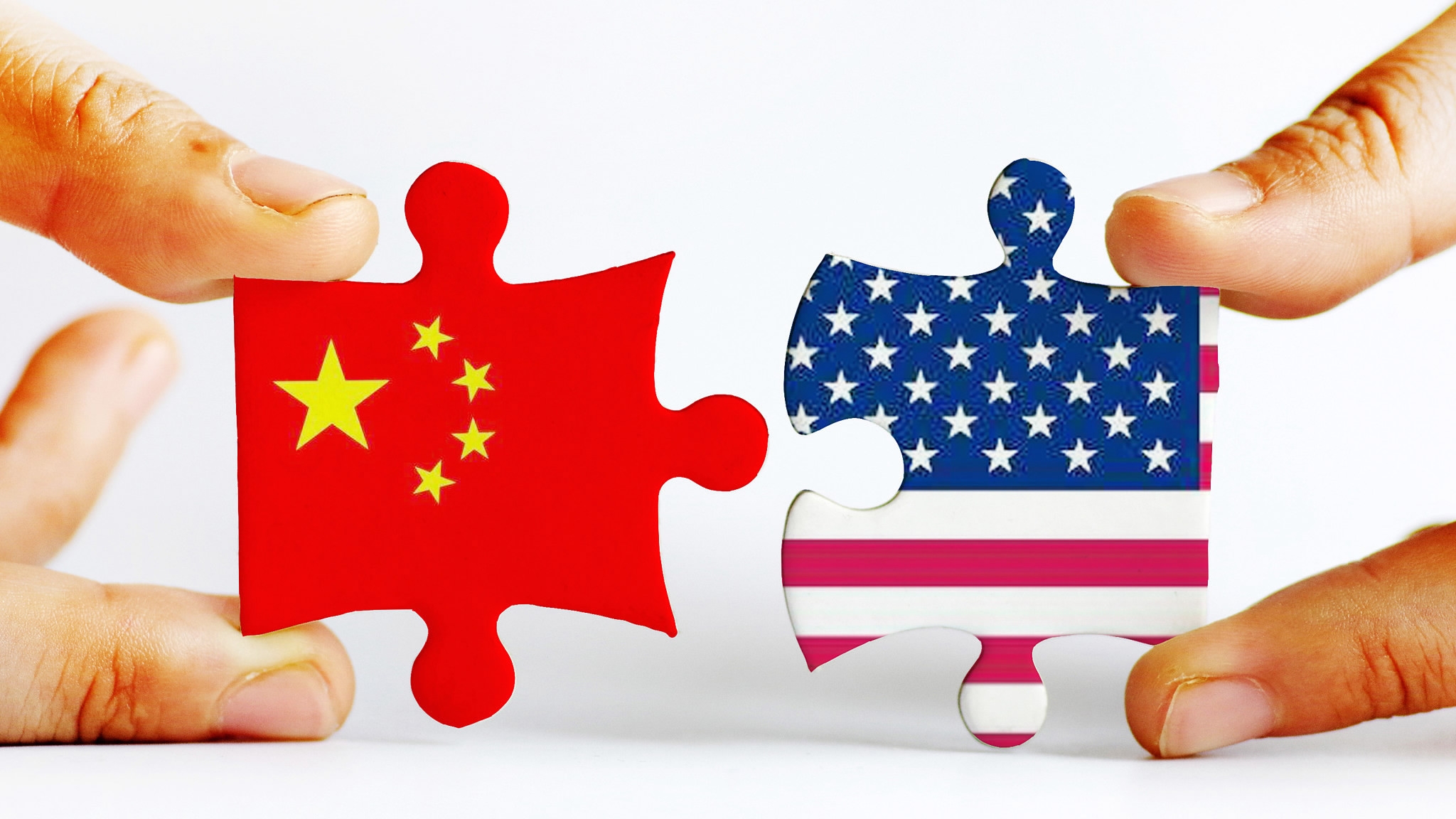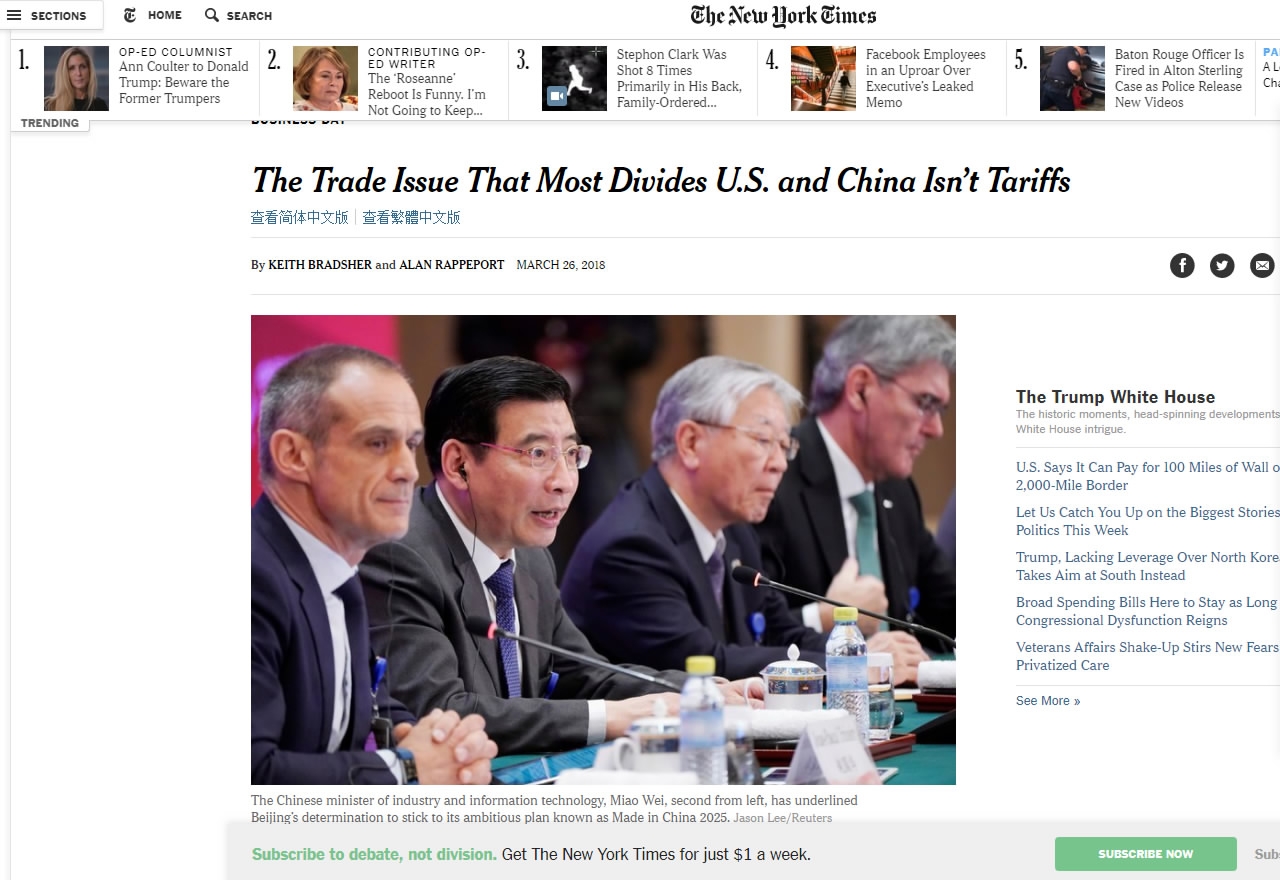
(Photo: CGTN)
When the Trump administration announced new US trade tariffs on China, it stated that the decision was to protect national security and solve intellectual property issues. And is this true? CGTN reporter Wang Guan analyzed the data, showing that the US statement is a complete disguise.
Referring to the "trade war,” the US move can be simply summed up as 232 (Section 232 of the Trade Expansion Act of 1962) and 301(Section 301 of the Trade Act of 1974), respectively corresponding to the protection of "national security" and the resolution of "intellectual property rights."
The flawed 'national security' argument on steel
According to Wang’s report, based on the statistics from China Customs, the American Iron and Steel Institute and the third-party Lange Steel Research Center, in 2006 China exported 5.4 million tons of steel to the United States, but in 2017 it only had 1.18 million tons, a decrease of 78 percent. One of the reasons is that the US has imposed repeated sanctions against Chinese steel.
Many people feel puzzled. How can so little steel exported to the United States threaten the country's huge, heavenly network of national security systems? Even the US financial media raised objections by saying that national security is a good reason for protection, but not of steel and aluminum.

Bloomberg website screenshot, March 2, 2018 (Photo: CGTN)
Wang also compared the different treatment China and Canada received from the US. Today, Canada ranks first in the United States in steel imports and China 11th. However, the 232 report mentioned China a total of 202 times and Canada only 24. As a result, China was handed a 25 percent tariff and Canada was temporarily exempted from this round of sanctions. It is clear to see whether this is a double standard of the United States or whether it used national security as an excuse to engage in protectionism to curb trade in China.
The excuse of 'intellectual property rights'
Regarding the recent 301 investigation, Wang also cited specific facts. The US stated that because China infringes on US intellectual property rights, it will impose sanctions on ten Chinese exports to the United States in the future. It is not hard to find that the ten major areas on the list of specific sanctions given by the US are exactly in line with the ten major areas listed in the “Made in China 2025” plan for China to become a manufacturing power.
This can be echoed by a headline report of the New York Times, which stated that the real consideration of the United States is to curb the upgrading of China's manufacturing industry and slow down the development of the country's industrial prosperity as it moves to achieve its manufacturing goal by 2025. “Administration officials strongly object to the program’s goal of having Chinese companies dominate these advanced industries, particularly in the Chinese market,” the paper said in the report.

New York Times website screenshot, March 26, 2018. (Photo: CGTN)
Meanwhile, Wang also cited an example of his own personal experience. Last November, he participated in a seminar on “301 survey” by the Center for International and Strategic Issues (CISI), presenting by many hawks toward China who support or participate in the “301 survey,” including senior Senator John Cornyn. At the seminar, Cornyn spoke unambiguously as the voice of the American hawks: The next round of US economic and trade sanctions against China is to slow down or even delay the progress of China’s sophisticated technology and its march to overtake the US by all means, and to ensure American high and new technology is globally leading and its strategic leader position.
From a microscopic point of view, intellectual property is indeed an issue between China and the United States. However, at a macro level, the United States is using intellectual property as an excuse to use tariff measures to suppress China's upgrade to a high-caliber manufacturing powerhouse.


